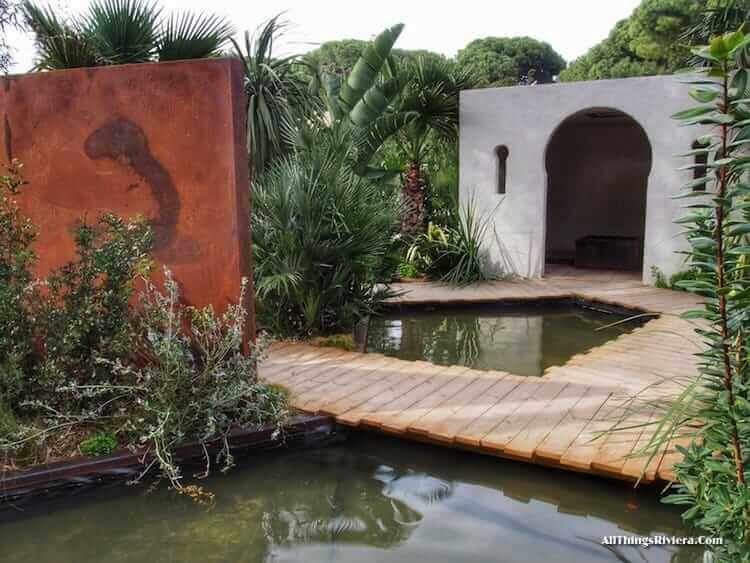Never judge a travel destination by what you can see from afar. Chances are you will be lured into a trap by sights that promise more than they can deliver – or, much worse than that, deterred from taking a closer look by one particularly disfiguring element of the townscape.
You will never know what earthly paradise you may have missed if only you had given the place a chance.

This is what can happen if all you care to find out about La Ciotat is what you can see of the town from the train to Marseille.
The old shipyards, admittedly, do look rather scary from afar …

… but closer up, you can see that they have been embedded in a more visitor-friendly environment.
In fact, no ships have been built in La Ciotat since the dockyards’ final launch in 1988. Much of the machinery, however, has stayed in place: either as an industrial monument, left in situ as a reminder of the town’s history …
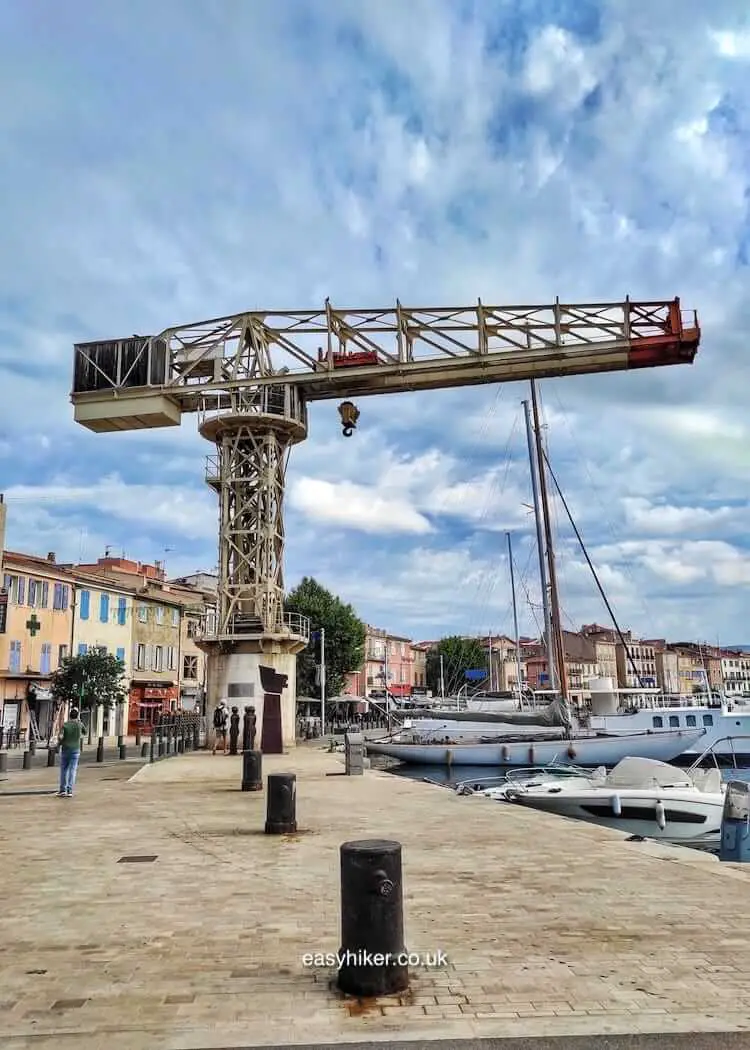
… or because it has been repurposed and is still in use. This is because, while naval vessels may no longer be constructed here, they are still being refitted and repaired.
In recent years, La Ciotat has developed a reputation as the world’s foremost specialist for the renovation and maintenance of super yachts. Each year, approx. 100 of these extra-large luxury boats with a length of more than 50 metres moor here for an overhaul – that is about 1 in 7 of the entire global fleet.
Nearly all of the other boats that you see in the port are pleasure boats: there are, in total, 750 of them, while only 15 registered fishing boats still ply their trade from the port.
Once, La Ciotat was a proud fisherman’s village, then it became an industrial giant, and now – well, it is, like most towns (and individuals) across the world, following the money.
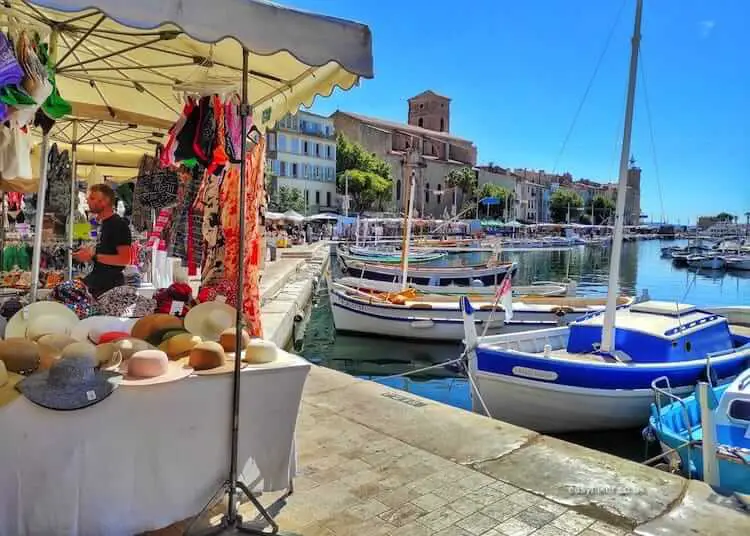
Consequently, tourism – in support of yacht refitting – has become the second pillar of the local economy.
And La Ciotat has ensured that there is something for nearly every kind of visitor: for the beach-bunny day trippers from Marseille (the “capital of the south” is just 30 minutes away by train), there is a large beach that straddles the western outskirts of town, while the town centre charms visitors from further away with the charm and atmosphere of a small town in the deepest Provence.
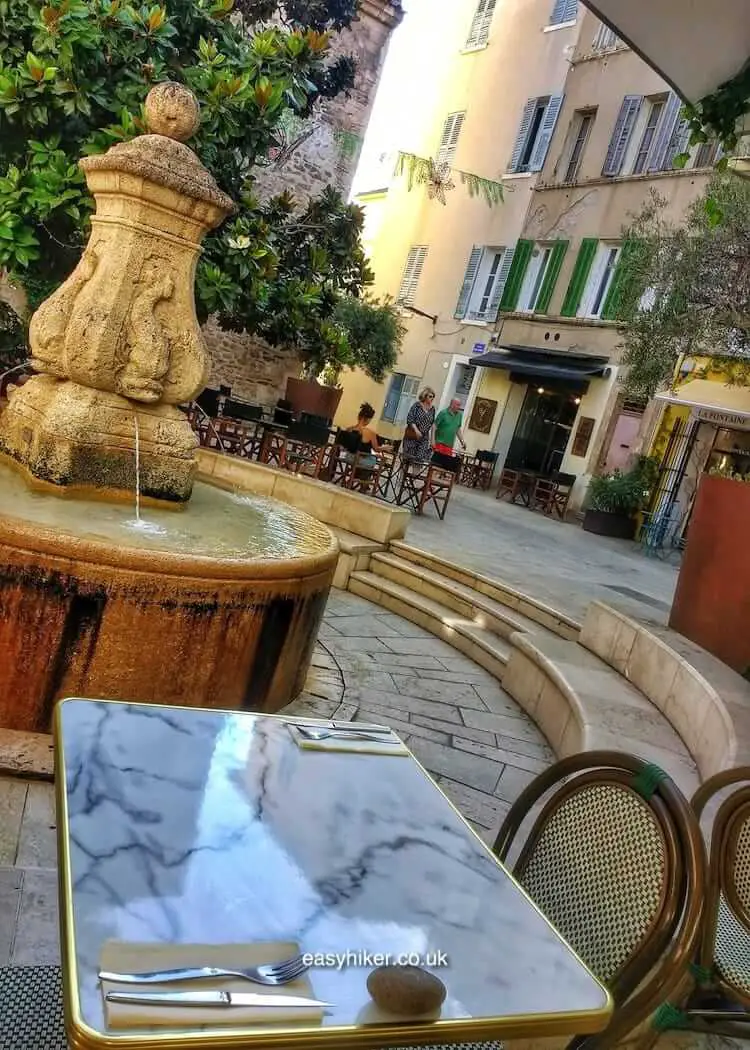
Hikers, meanwhile, come here mainly for the town’s calanques, two of which can be found in easy walking distance from the town centre.
How to Visit The Two Calanques of La Ciotat
To reach one of these steep-walled inlets of the Mediterranean Sea, you must pass by the old shipyards …

… before turning into the Avenue des Calanques.
Continue up to the crossing with the Avenue du Mugel. Turn left there, and you will walk straight into the Calanque du Mugel.
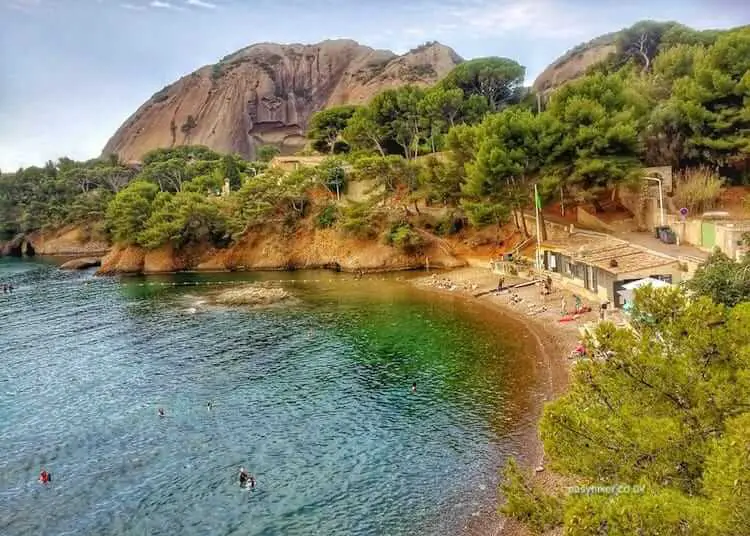
If you have already visited the calanques of Cassis and Marseille, you may notice a few differences with the the two Calanques of La Ciotat. Above all, further to the west on the coast, the predominant colour of the cliffs is grey, while the two calanques of La Ciotat are distinguished by the reddish tint of the puddingstone, sediments that have been brought here over thousands of years by rivers coming in from the Alps and the Pyrenees.
Feel free to walk down to the beach …

… where you can join the bathers – if you manage to find a free spot, that is.
If you don’t feel like taking a swim, just walk around a little and enjoy the beauty of this subtropical paradise.
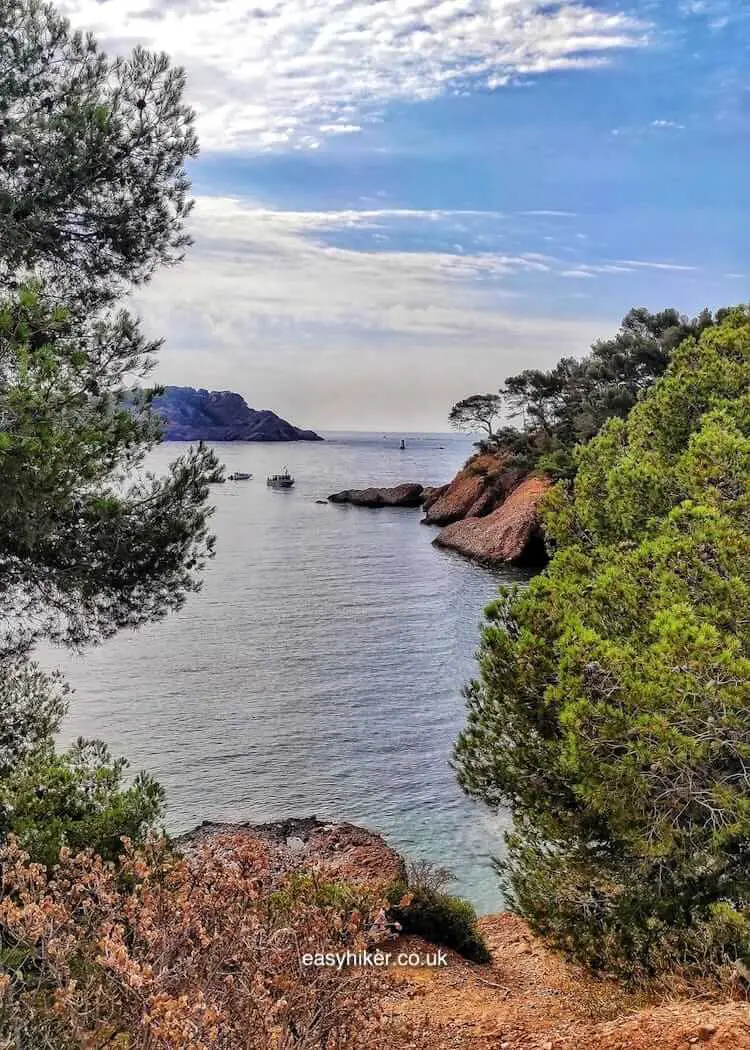
Then walk back to the place where you turned left from the Avenue des Calanques, but this time, continue straight into the Avenue du Mugel for approx. 500 metres before turning left into the Avenue des Figuerolles.
This street will take you to the second of La Ciotat’s subtropical fjords, the Calanque de Figuerolles.
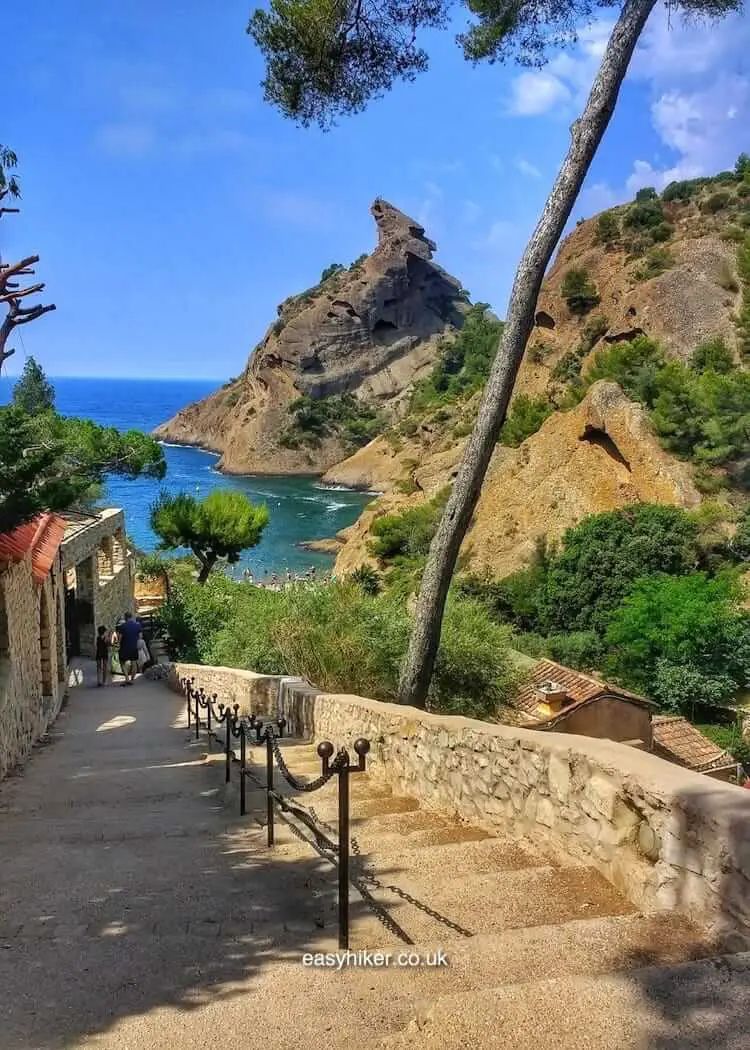
This calanque, also home to a very busy beach, …

… comes with a bit of history.
In the late Middle Ages, it was such a notorious den for smugglers and pirates that the local rulers eventually (in 1543) established an armed outpost near-by to get things under control, a site that later became the location for the church of Notre Dame de la Garde (approx. 250 metres to the west).
In later centuries, terraces of fig trees (“figuerolles”) were laid out around the calanque to take advantage of its relatively humid micro-climate.
Even today, if you walk around a little, you may be surprised by the lushness of the vegetation.

We suggest to visit the Mugel first, because, provided you start reasonably early in the morning, you will arrive at the Figuerolles just in time for a little snack, and there are more options for a meal (or a drink) here than at the Mugel.
Several bars and restaurants can be found on the terraces that line the calanque, ranging from the simple to the rather sophisticated, and there is even one with a mention in the Gault-Millau.
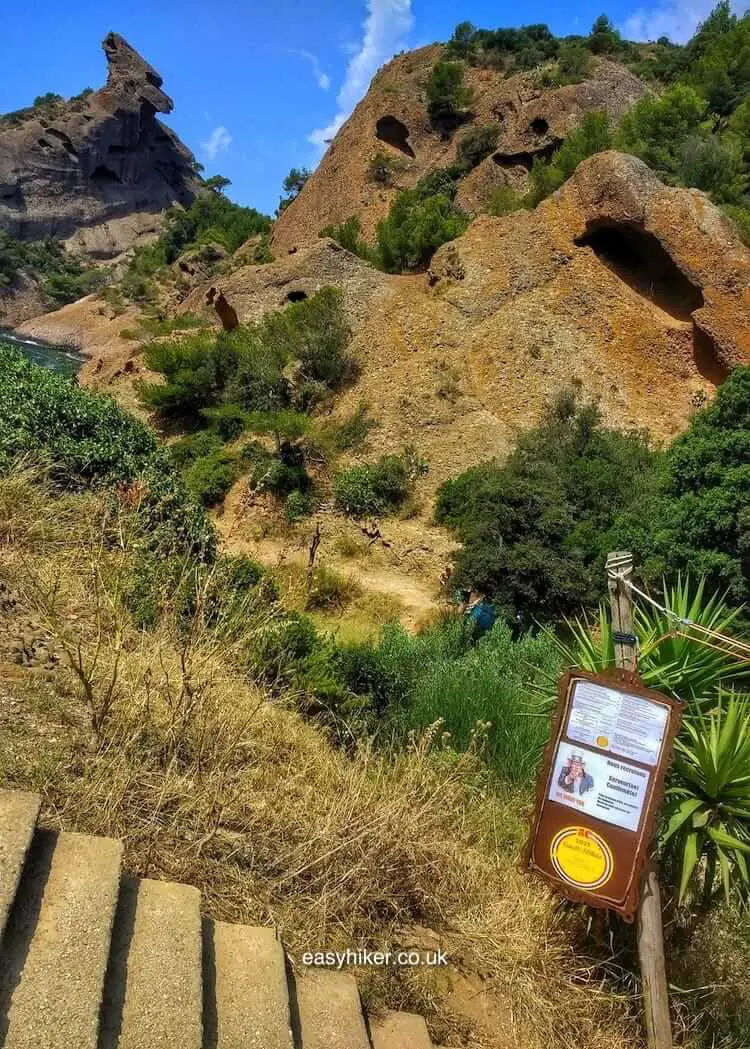
At any rate, we are not yet quite finished with the calanques of La Ciotat. Next week, we will return to the Mugel for one of the most scenic walks on the entire coast.
Join us then!




